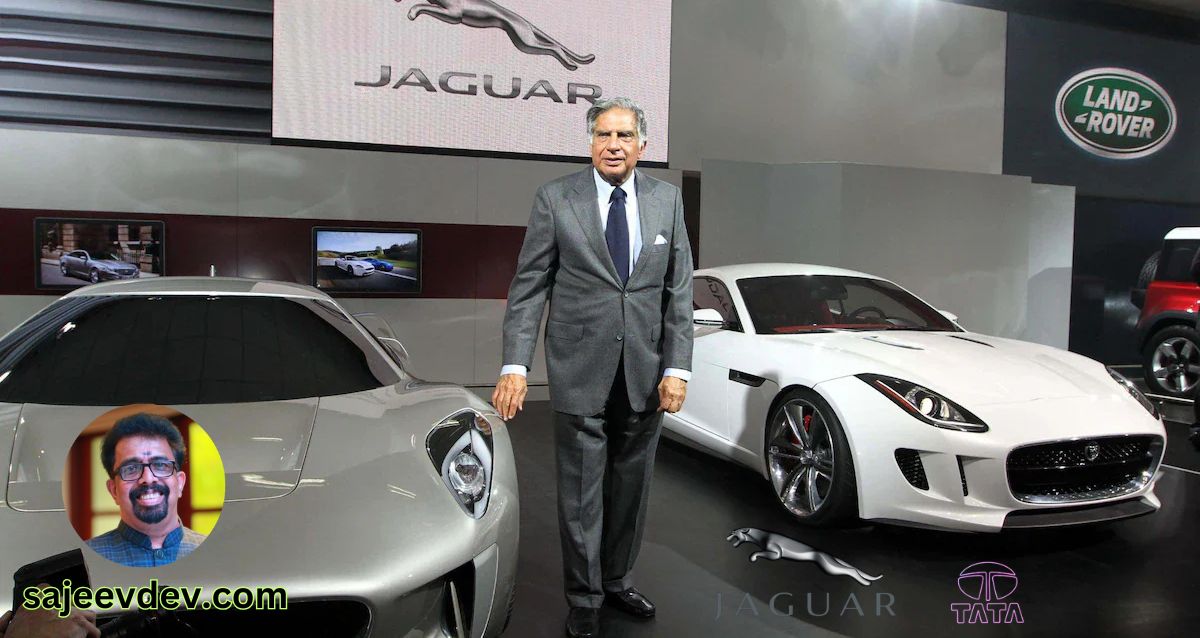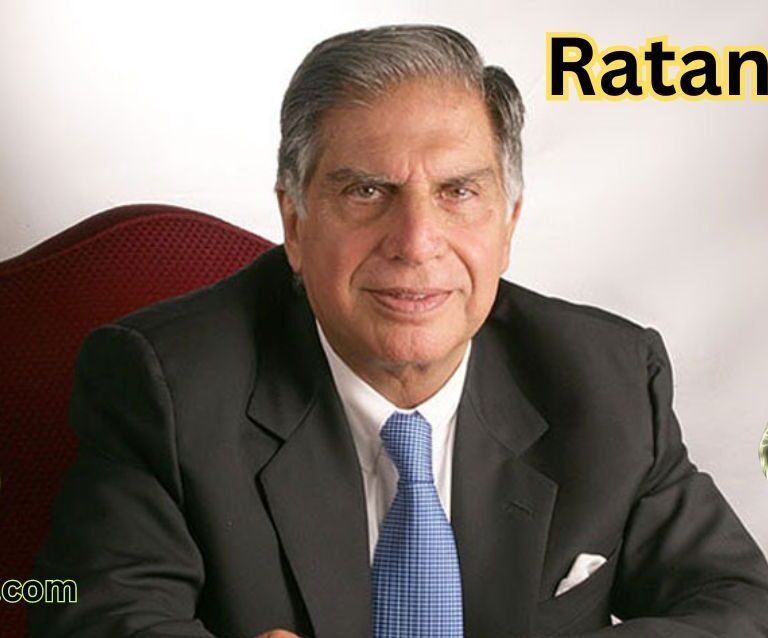Ratan Tata, born on December 28, 1937, in Navsari, Gujarat, India, is a prominent Indian industrialist and philanthropist, widely known for his leadership and vision as the former chairman of Tata Sons
Ratan Tata, born on December 28, 1937, in Navsari, Gujarat, India, is a prominent Indian industrialist and philanthropist, widely known for his leadership and vision as the former chairman of Tata Sons. He is a member of the Tata family, which has a rich heritage in the Indian business landscape. Ratan Tata pursued his education at the prestigious Cornell University, where he earned a degree in architecture with structural engineering. He further honed his skills at Harvard Business School in the Advanced Management Program, equipping him with the tools necessary for effective corporate leadership.
Ratan Tata joined the Tata Group in 1962, initially serving at Tata Steel. His early experiences within the organization fostered a deep understanding of the company’s operations and values. He held various leadership positions from 1971 onwards, ultimately becoming the chairman of Tata Sons in 1991. Under his stewardship, the Tata Group expanded significantly, entering new sectors such as telecom, information technology, and automobiles, while also enhancing its global presence through strategic acquisitions.
One of Ratan Tata’s visionary initiatives was the introduction of the Tata Nano, targeted as an affordable vehicle for the masses, showcasing his commitment to innovation and accessibility in the automobile sector. Beyond product development, he emphasized ethical business practices, social responsibility, and sustainability, reshaping the corporate culture of the Tata Group. Ratan Tata’s tenure was marked by a series of successful acquisitions, including the landmark purchase of Jaguar Land Rover in 2008. This move not only strengthened Tata’s footprint in the global automotive industry but also demonstrated his keen foresight in recognizing opportunities for growth in a competitive market.
The Tata Group: A Brief Overview
The Tata Group, established in 1868 by Jamsetji Tata, is one of India’s largest and most respected conglomerates, with a fundamental commitment to philanthropy and ethical business practices. Over the years, the conglomerate has evolved into a global player, with operations in over 100 countries across various sectors, including steel, automobiles, information technology, telecommunications, hospitality, and consumer goods. The Group’s foundation is built on the principle of serving society, which is reflected in its mission to create sustainable growth.
Tata’s growth trajectory has been significantly shaped by robust leadership and a formidable vision. Following Jamsetji Tata’s pioneering spirit, his successors, including Ratan Tata, have guided the conglomerate through various economic landscapes. Ratan Tata, who took the helm in 1991, concentrated on transforming the Group through strategic international acquisitions, innovative products, and a commitment to corporate social responsibility. This focus aligns with the overarching ethos of the Tata Group, emphasizing ethical practices, sustainable development, and the well-being of communities.
Key industries under the Tata umbrella include Tata Steel, Tata Motors, and Tata Consultancy Services, among others. Tata Motors, in particular, has marked its presence in the automobile sector with a variety of vehicles, ranging from passenger cars to commercial trucks. The Group’s strategic decisions have often reflected careful analysis of market trends, consumer preferences, and economic conditions, laying a solid foundation for significant ventures. This corporate ethos, underscored by respect for ethical business practices and customer satisfaction, has been vital in steering the Group toward successful acquisitions and business expansions.
Overall, the Tata Group’s commitment to values and social responsibility has not only established it as a leader in various industries but has also significantly influenced Ratan Tata’s business endeavors, notably the acquisition of Jaguar. This landmark decision exemplifies how the Group’s historical principles continue to lay the groundwork for its modern achievements.
Background of Jaguar and Land Rover
The Jaguar and Land Rover brands have established themselves as iconic names in the automotive industry, known for their unique blend of luxury and performance. Jaguar, founded in 1935, initially gained fame for its sporty coupes and sedans, while Land Rover, established in 1948, focused on rugged, all-terrain vehicles. Over the years, both brands have represented British automotive engineering excellence and have garnered a loyal global following.
However, despite their rich heritage, both Jaguar and Land Rover faced significant financial challenges in the late 20th and early 21st centuries. The economic landscape shifted dramatically, with increasing competition and changing consumer preferences affecting sales. Jaguar, for instance, struggled to maintain its status as a luxury sports car brand amidst the rise of new entrants, while Land Rover grappled with fluctuating demand for SUVs. These difficulties culminated in the brands being sold in the 1990s and 2000s to various parent companies, ultimately leading them to become part of Ford’s Premier Automotive Group.
By the early 2000s, however, Ford’s ownership became a burden as it sought to streamline operations amid its own financial issues. Jaguar and Land Rover were placed up for sale in 2008, marking a pivotal moment for these venerable brands. Their rich history, combined with a penchant for innovation and performance, made them attractive targets for acquisition. Ultimately, Tata Group recognized the potential of these brands, not only for their heritage but also for the opportunity to revitalize them in the global market. The acquisition in 2008 signified not just a transition of ownership but a bold step towards rejuvenating two illustrious names steeped in automotive tradition.
The Acquisition Process
The acquisition of Jaguar and Land Rover (JLR) by Tata Motors in 2008 marked a significant milestone in the automotive industry, exemplifying strategic foresight and global ambition. The process initiated in early 2008, when Ford Motor Company decided to sell these iconic British brands, which had been struggling financially and facing challenges in the highly competitive market. Tata Motors, motivated by the opportunity to enhance its brand portfolio and expand its presence in the premium segment, saw potential in revitalizing JLR’s legacy.
In March 2008, Tata Motors formally entered negotiations with Ford, which was seeking to offload JLR to focus on consolidating its operations amidst a tumultuous economic climate. Tata Motors’ strategic analysis revealed that acquiring JLR would not only provide access to valuable engineering capabilities but also strengthen its footprint in international markets. Consequently, after a series of discussions and due diligence, Tata Motors submitted a bid for JLR in early April 2008, committing to a thorough evaluation of the brands’ existing structures and future potential.
The financial aspects played a crucial role in these negotiations, with Tata Motors agreeing to purchase JLR for approximately $2.3 billion. This acquisition price was viewed as a calculated risk, given the ongoing financial struggles of both brands, but Tata’s leadership believed that this marked the beginning of a transformative journey. Once initial agreements were reached, there was widespread speculation and anticipation regarding how Tata Motors would influence the, at that time, beleaguered reputation of the brands.
In June 2008, after securing necessary approvals and completing all requirements, Tata Motors officially acquired Jaguar and Land Rover from Ford, thereby not only acquiring their assets but also inheriting a rich heritage. This acquisition has since been viewed as a landmark moment in global business, showcasing Tata Motors’ ability to maneuver through complex negotiations and reimagine the future of two historic automotive brands.
Ratan Tata’s Vision for Jaguar and Land Rover
Following the acquisition of Jaguar and Land Rover (JLR) in 2008, Ratan Tata articulated a vision that aimed to transform these iconic British brands into successful global players while preserving their heritage and craftsmanship. His strategic goals centered around innovation, quality, and market expansion, crucial elements that would support the revival of JLR in the competitive automotive landscape.
A significant aspect of Tata’s vision was the emphasis on innovation, particularly in the fields of sustainability and advanced automotive technology. Ratan Tata recognized the industry’s shift toward environmentally friendly vehicles and invested heavily in research and development. This investment led to the introduction of electric and hybrid models, positioning JLR as a frontrunner in eco-friendly mobility while also appealing to a growing consumer base prioritizing sustainability.
Quality was another cornerstone of Tata’s strategy. He believed that to regain consumer trust and market share, JLR had to enhance its reputation for reliability and luxury. Under Tata’s leadership, the company implemented rigorous quality control measures and focused on refining manufacturing processes. This attention to detail ensured that every vehicle met the high expectations synonymous with Jaguar and Land Rover, thus reinforcing their status as premium automotive brands.
Additionally, Ratan Tata saw enormous potential in identifying growth opportunities in international markets. His vision included expanding JLR’s footprint in emerging economies, capitalizing on the increasing demand for luxury vehicles. This approach was underpinned by a commitment to build local partnerships and adapt offerings to cater to diverse consumer preferences across different geographies.
Finally, the successful cultural and operational integration of JLR into the Tata Group was pivotal. Tata employed a hands-on approach to ensure that the new subsidiaries aligned with the Tata ethos while retaining their unique identities. This balance fostered a collaborative environment that encouraged innovation and shared best practices between the two entities.
Challenges and Opportunities Post-Acquisition
Following the acquisition of Jaguar and Land Rover by Tata Motors in 2008, a series of challenges emerged as the company sought to revitalize these iconic British brands. One prominent challenge was the intense competition within the luxury automotive sector, which features established brands with strong market presence and loyal customer bases. Tata Motors had to contend with fluctuating market dynamics that could affect luxury automobile sales, particularly during economic downturns. Additionally, the need to restore the brand identity of Jaguar and Land Rover posed a significant hurdle. Both brands had experienced diminished stature prior to the acquisition, and reestablishing their appeal required strategic marketing efforts and innovative design approaches.
Despite these challenges, the acquisition also presented numerous opportunities for Tata Motors. The potential for new product development was substantial, as Tata Motors aimed to leverage its engineering capabilities alongside Jaguar and Land Rover’s historical expertise in luxury and performance vehicles. This synergy opened doors for the creation of unique models that could meet the evolving preferences of consumers in the luxury market. Moreover, the Tata ecosystem provided an advantage, allowing for shared resources in technology, manufacturing, and supply chain management. Such collaboration not only promoted efficiency but also enabled the introduction of advanced features across the product lines of both brands.
Market expansion also emerged as a significant opportunity in the wake of the acquisition. Tata Motors sought to capitalize on Jaguar and Land Rover’s established global networks to enhance their market reach, particularly in emerging markets where demand for luxury automobiles was on the rise. As a result, the strategic decisions made in post-acquisition phases were pivotal in navigating challenges while maximizing the advantages afforded by this landmark acquisition.
Impact on Global Business Landscape
The acquisition of Jaguar and Land Rover by Ratan Tata in 2008 marked a pivotal moment in the global business landscape, particularly for Indian conglomerates. Historically, luxury brands were perceived as the domain of Western corporations, embodying prestige and expertise often thought unattainable by non-Western entities. Tata’s successful bid to acquire these esteemed British automotive brands not only challenged these preconceived notions but also demonstrated the growing capabilities of Indian firms in managing high-end products. This acquisition indicated a significant transition in global business dynamics, as it unfolded the narrative of emerging markets increasingly contributing to luxury sectors.
The implications of this acquisition extend beyond just Tata Group. It served as a catalyst for changing perceptions surrounding foreign investments in the automotive industry. The move highlighted a budding confidence among Indian businesses to not only invest overseas but also integrate and revitalize iconic brands with cultural significance. By stepping into the realm of luxury automobiles, Tata illustrated that cross-border investment strategies could unveil value that might have been overlooked by previous owners. This approach encouraged other Indian businesses to explore acquisitions in developed markets, fostering a ripple effect throughout the global business community.
Furthermore, Tata’s acquisition paved the way for deeper collaborations between India and the UK, enhancing bilateral trade relations. The success of Jaguar and Land Rover under Tata management showcased how effective leadership could reinvigorate established brands. It also inspired other emerging market players to strive for excellence on an international stage, thereby reshaping the narrative and encouraging more diverse investments in the automotive sector. Consequently, Ratan Tata’s bold move has fundamentally altered the global perception of not only Indian conglomerates but also the broader landscape of international business investment.
Success Stories: Jaguar and Land Rover under Tata
The acquisition of Jaguar Land Rover (JLR) by Tata Motors in 2008 marked a transformative period for the iconic British brands. Under Tata’s stewardship, JLR experienced significant revitalization, characterized by innovative product development, a robust financial turnaround, and a reinvigorated global presence. Notably, Tata’s commitment to quality and excellence positioned JLR back in the limelight of the competitive automotive landscape.
One of Tata’s earliest moves was to invest heavily in product innovation, introducing new models that catered to evolving consumer preferences. The launch of the Jaguar F-Type, a high-performance sports car, and the Range Rover Evoque, which creatively combined luxury with compact efficiency, exemplified Tata’s dedication to innovation. These vehicles not only garnered numerous awards but also captured the imagination of a younger demographic, expanding the brands’ appeal and market share.
Tata Motors also prioritized revamping the brand identity of JLR to reflect modern luxury and design aesthetics. The consolidation of the brands under a unified vision enabled them to strengthen their reputations. The integration of advanced technology features, sustainable practices, and bespoke customer experiences resonated well with consumers, reinforcing JLR’s market position as a leader in luxury vehicles.
Financially, JLR achieved remarkable recovery post-acquisition. With strategic cost management and increased production efficiency, Tata successfully reversed the brands’ financial fortunes. Reports indicate that JLR had consistently increased sales volumes, especially in emerging markets like China and India, where the demand for luxury vehicles surged. This alignment with global markets helped the brands extend their reach significantly, further establishing their presence on the world stage.
Tata Motors’ stewardship of Jaguar and Land Rover exemplifies how focused leadership and strategic innovation can revitalize historic brands. Through diligent efforts, Tata not only safeguarded the legacy of JLR but also propelled them into a new era of success.
Ratan Tata’s acquisition of Jaguar and Land Rover in 2008 stands as a pivotal point in the history of the Tata Group and the global automotive sector
Ratan Tata’s acquisition of Jaguar and Land Rover in 2008 stands as a pivotal point in the history of the Tata Group and the global automotive sector. This strategic decision not only transformed Tata Motors but also marked India’s ascent in the international automotive arena. The deal, valued at approximately $2.3 billion, exemplified Tata’s vision for embracing advanced technology and design ethos from established brands in the Western market.
The acquisition allowed Tata Motors to leverage the rich heritage and brand value of Jaguar and Land Rover, revitalizing their operations and product lines. Under Tata’s stewardship, the historic British luxury brands experienced rejuvenation, with innovative models that reflected a blend of tradition and modern engineering excellence. This transformation is particularly noteworthy in an industry marked by fierce competition and rapid technological advancements.
Moreover, Ratan Tata’s foresight in spearheading this acquisition facilitated a significant cultural exchange within the business landscape. By integrating global standards of excellence into Tata Motors’ operational framework, he paved the way for future collaborations and cross-border investments. The acquisition illustrated how companies from emerging markets could successfully engage with established Western players, fostering a spirit of global partnership.
In retrospective analysis, the impact of Ratan Tata’s decision has been profound. It not only uplifted the Tata Group’s global standing but also inspired other Indian enterprises to explore international acquisitions as a means of growth. Consequently, this landmark acquisition has become a case study in strategic business expansion, demonstrating the potential of visionary leadership in bridging gaps between domestic and global markets. Ultimately, the legacy of Tata’s acquisition will endure as a testament to innovation and ambition in the dynamic field of international business.








